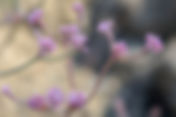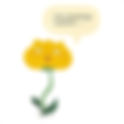Search Results
924 results found with an empty search
- Coast Arnica, Rayless Arnica Arnica discoidea
Wildflower Mount Diablo Coast Arnica, Rayless Arnica Scientific Name: Arnica discoidea Family: Asteraceae (Sunflower Family) Blooms: May - Jun Color: Yellow-Orange Perennial herb Native Jump to Blooming Now Blue / Purple Red / Pink White Yellow / Orange Invasive Plants Kevin Hintsa
- Satyr Comma
Satyr Comma Polygonia satyrus Nymphalidae Brushfoots Flies All year Host Plant Nettle Nectar Plant Daniel Fitzgerald Liam O'Brien
Megachile Leafcutter Bee Megachile Megachilidae Megachile Describe your image Describe your image Describe your image Describe your image Describe your image Describe your image Description Bees of Genus Megachile are small to large (mostly medium), usually black-bodied or gray, with whitish stripes on their abdomens. They are often hairy, with bumps or horns on their faces. Females have prominent scopae on the underside of the abdomen for carrying pollen. The rear of the male's abdomen is often blunt. Nectar/ Pollen Plants Megachile are usually nectar and pollen generalists. Habits Most Megachile nest in wood cavities or hollow stems, using cut leaves or resin to line the interior of wood tunnels into cells Season Summer
- Giant Trillium Trillium chloropetalum
Wildflower Mount Diablo Giant Trillium Scientific Name: Trillium chloropetalum Family: Melanthiaceae (Bunchflower Family) Blooms: Mar - May Color: Red-Pink Perennial herb Native Jump to Blooming Now Blue / Purple Red / Pink White Yellow / Orange Invasive Plants Mike Woodring
- Hop Tree, Western Hoptree Ptelea crenulata
Wildflower Mount Diablo Hop Tree, Western Hoptree Scientific Name: Ptelea crenulata Family: Rutaceae Blooms: April - June Color: Yellow-Orange Tree or shrub Native Jump to Blooming Now Blue / Purple Red / Pink White Yellow / Orange Invasive Plants Stephen Smith
Eucera Longhorn Bee Eucera Apidae Eucera Describe your image Describe your image Describe your image Describe your image Describe your image Describe your image Description With Eucera spp. belonging to subgenus Synhalonia (as our locals do), males (e.g. above left) have very long, solid black antennae, and tan/yellow hair on clypeus (lower face). Females (e.g. above right) have a dark clypeus and shorter antennae. Eucera , larger than most Melissodes , have hair bands lacking or apical (not medial as in Melissodes ). With Eucera , the clypeus projects outward, and the female abdomen is squared. Head is broad and flat-topped (versus Diadasia ). Nectar/ Pollen Plants Generalists, often on lupine and manzanita. Habits These ground-nesters burrow into flat ground with side galleries of individual cells for each egg. Cells are provisioned with pollen and nectar and plugged with packed dirt. Burrows are about 1 foot deep. Season March to June
- Mount Diablo Buckwheat Eriogonum truncatum
Wildflower Mount Diablo Mount Diablo Buckwheat Scientific Name: Eriogonum truncatum Family: Polygonaceae (Buckwheat Family) Blooms: Color: Red-Pink Annual herb Native Mount Diablo buckwheat, with its characteristic branched flowers, grows along the edges of chaparral, in areas that have been partly cleared of grass by rabbits. Thought to be extinct for several decades, this plant has resurfaced in limited distribution. Read more California Rare Plant Rank: 1B.1 (rare, threatened, or endangered in CA and elsewhere ). This plant is rare in Mount Diablo State Park. See full list Jump to Blooming Now Blue / Purple Red / Pink White Yellow / Orange Invasive Plants Scott Hein
- Sulfur Buckwheat Eriogonum umbellatum var. bahiiforme
Wildflower Mount Diablo Sulfur Buckwheat Scientific Name: Eriogonum umbellatum var. bahiiforme Family: Polygonaceae (Buckwheat Family) Blooms: Jun Color: Yellow-Orange Perennial herb Native, endemic to California This plant is rare in Mount Diablo State Park. See full list Jump to Blooming Now Blue / Purple Red / Pink White Yellow / Orange Invasive Plants Mike Woodring
- Soft Chaparral
Soft Chaparral by Glenn Keator, Ph. D. (Excerpted from MDIA's book Plants of the East Bay Parks) Plant Communities of Mount Diablo State Park January 1, 1999 Black sage, Salvia mellifera | Glenn Keator Also called coastal scrub or coastal sage scrub, soft chaparral is dominated by small shrubs with "soft" leaves (leaves with a pliable, thin texture). Leaves may be heavily scented -- smelling of sage, turpentine, or mint -- to keep animals from browsing them. These fragrant oils also evaporate on hot days to cool leaves and inhibit growth of competing plants. All of these ploys prevent shrubs from losing precious leaves, since it costs energy and water to make new ones. Yet in summers with prolonged drought, soft chaparral shrubs may lose most of their leaves as a last-gap effort to keep from dehydrating faster than roots can replenish water from bone-dry soils. Winter rains bring temporary supplies of water during which leaves are replaced. Soft chaparral is typical of rocky promontories in the fog belt, but components of this same community appear as temporary replacements for hard chaparral shrubs after brush fires. Soft chaparral shrubs are varied, with some particularly aggressive pioneer species, such as coyote brush (Baccharis pilularis ). Others include California sagebrush (Artemisia californica ), with broad dark green leaves whose edges curl under; sticky monkeyflower (Diplancus aurantiacus ), with sticky, viscid green lace-shaped leaves, again with curled-under edges; black sage (Salvia millifera ), with highly aromatic dark green, narrowly triangular leaves; blue witch (Solanum umbelliferum ), a green-twigged shrub whose fuzzy, light green leaves are cast away in summer; and poison oak (Toxicodendron diversilobum ), with shiny, triparite leaves, which are lost early during severe drought. Link to California Chaparral Field Institute website. BACK TO LIST
- Gray Buckeye
Gray Buckeye Junonia grisea Nymphalidae Brushfoots Flies February to November Host Plant Plantain, Owl's Clover, Monkey Flower, Figwort Nectar Plant California buckeye, Coyote Brush, Mustards (sinapis and brassica) Daniel Fitzgerald Daniel Fitzgerald Underwing
- Red Larkspur
Red Larkspur by Dan Sandri A Splash of Scarlet! April 1, 2025 Dan Sandri Red Larkspur (Delphinium nudicaule ) is out on Mount Diablo, and its presence, whether on a rocky slope above a creek or in the green grass, can be shockingly beautiful, a blaze of brilliant scarlet! A member of the Buttercup Family (Ranunculaceae), Red Larkspur is found in the foothills and mountains of California, with its range just reaching into southern Oregon. It is showy and bright, and can be found all around Mount Diablo State Park (look for it especially along Mary Bowerman, Falls, North Peak, Bald Ridge, Twin Peaks and Mitchell Canyon Trails – it’s all around, actually!). Plants are usually about a foot tall, and flowers are mostly bright red, although they can be red-orange. The leaves are located low on the stem and are often hidden in surrounding grasses. After blooming, the above-ground part of the plant disappears. And these flowers aren’t just attractive to us. They are attractive to hummingbirds too – their pollinators (many red flowers are pollinated by hummingbirds)! Red Larkspur (Delphinium nudicaule) by Dan Sandri BACK TO LIST
- Coffeeberry Frangula californica
Wildflower Mount Diablo Coffeeberry Scientific Name: Frangula californica Family: Rhamnaceae (Buckhorn Family) Blooms: Jun-Aug Color: Yellow-Orange Shrub Native Jump to Blooming Now Blue / Purple Red / Pink White Yellow / Orange Invasive Plants











